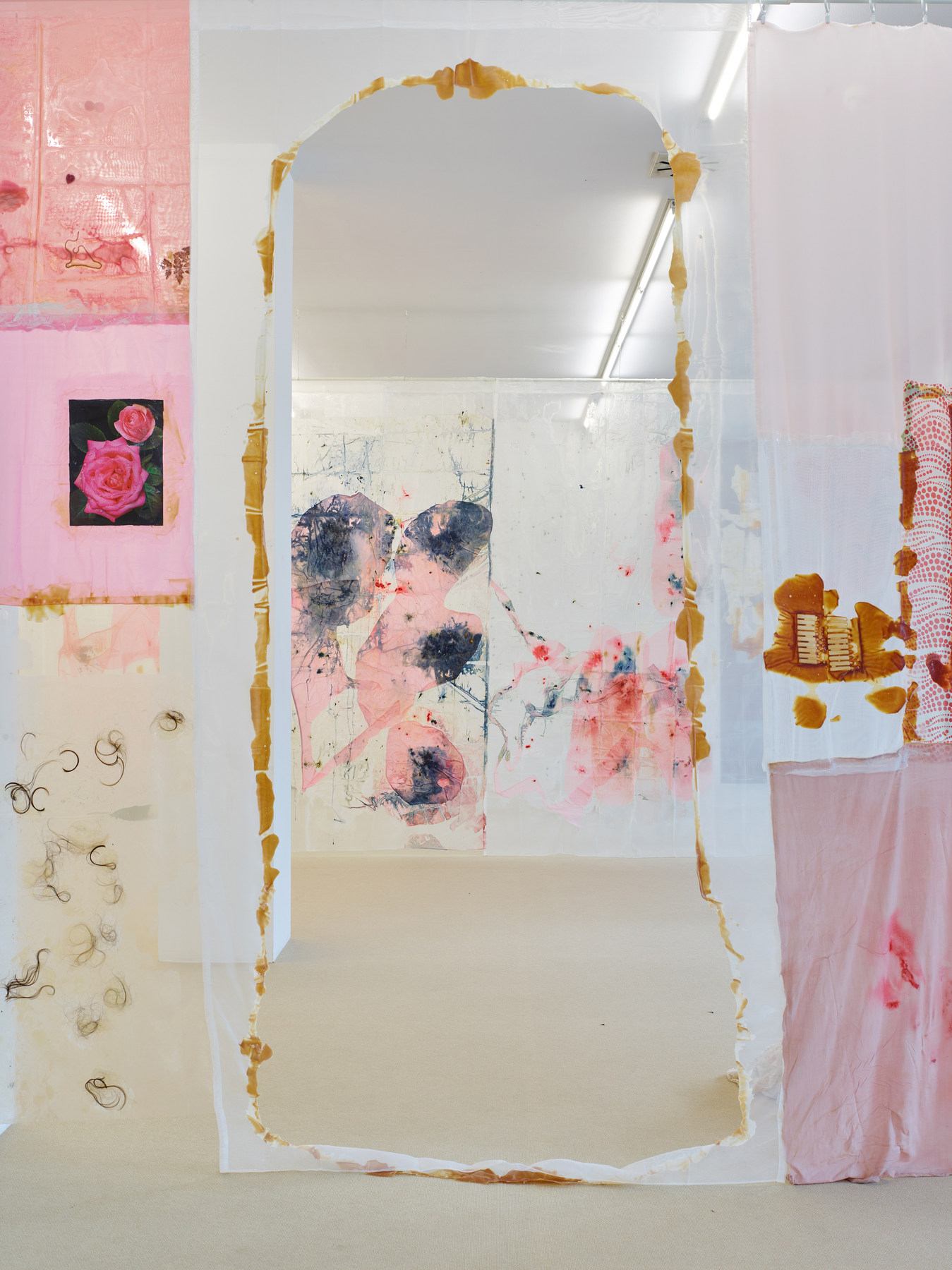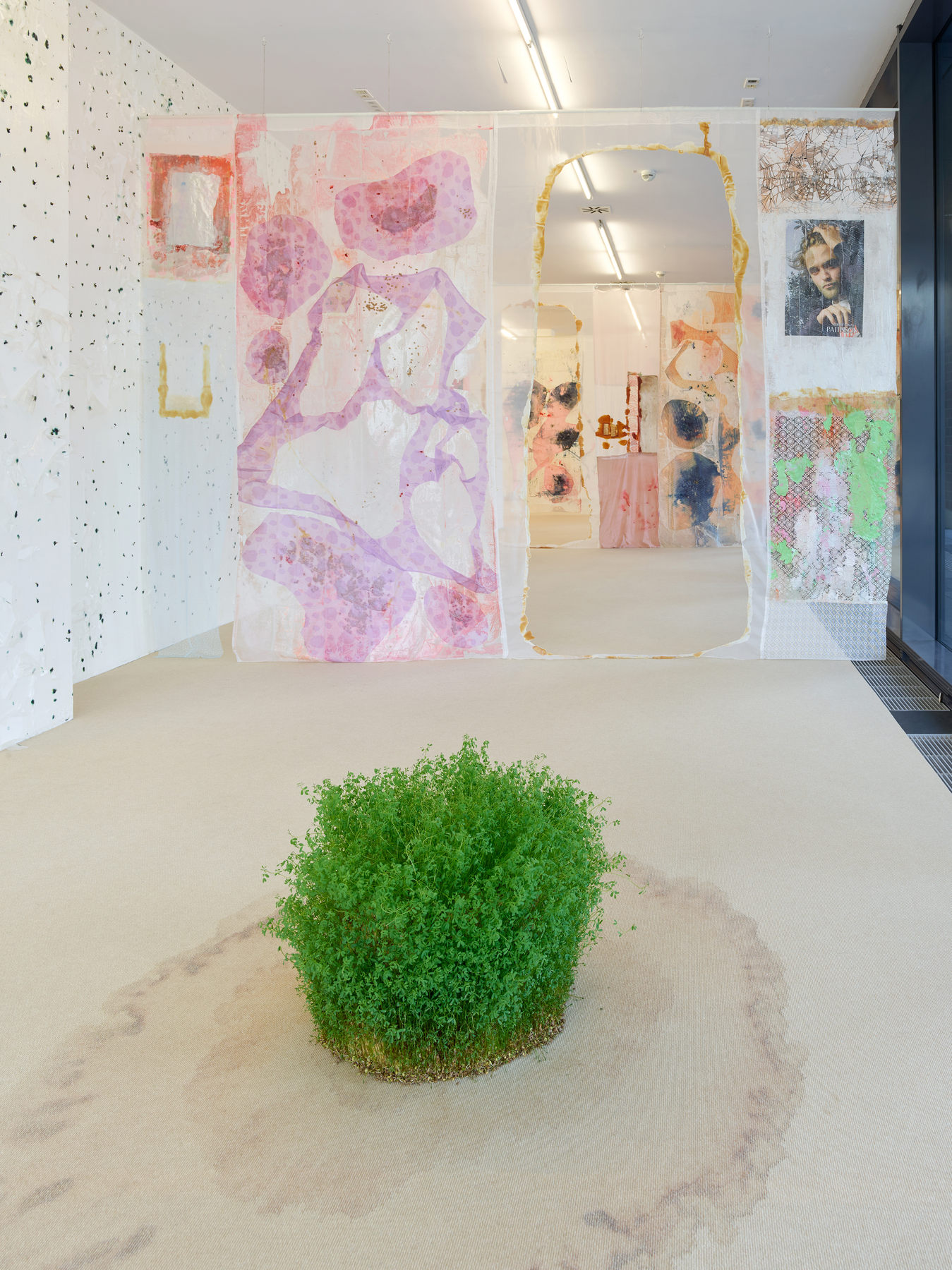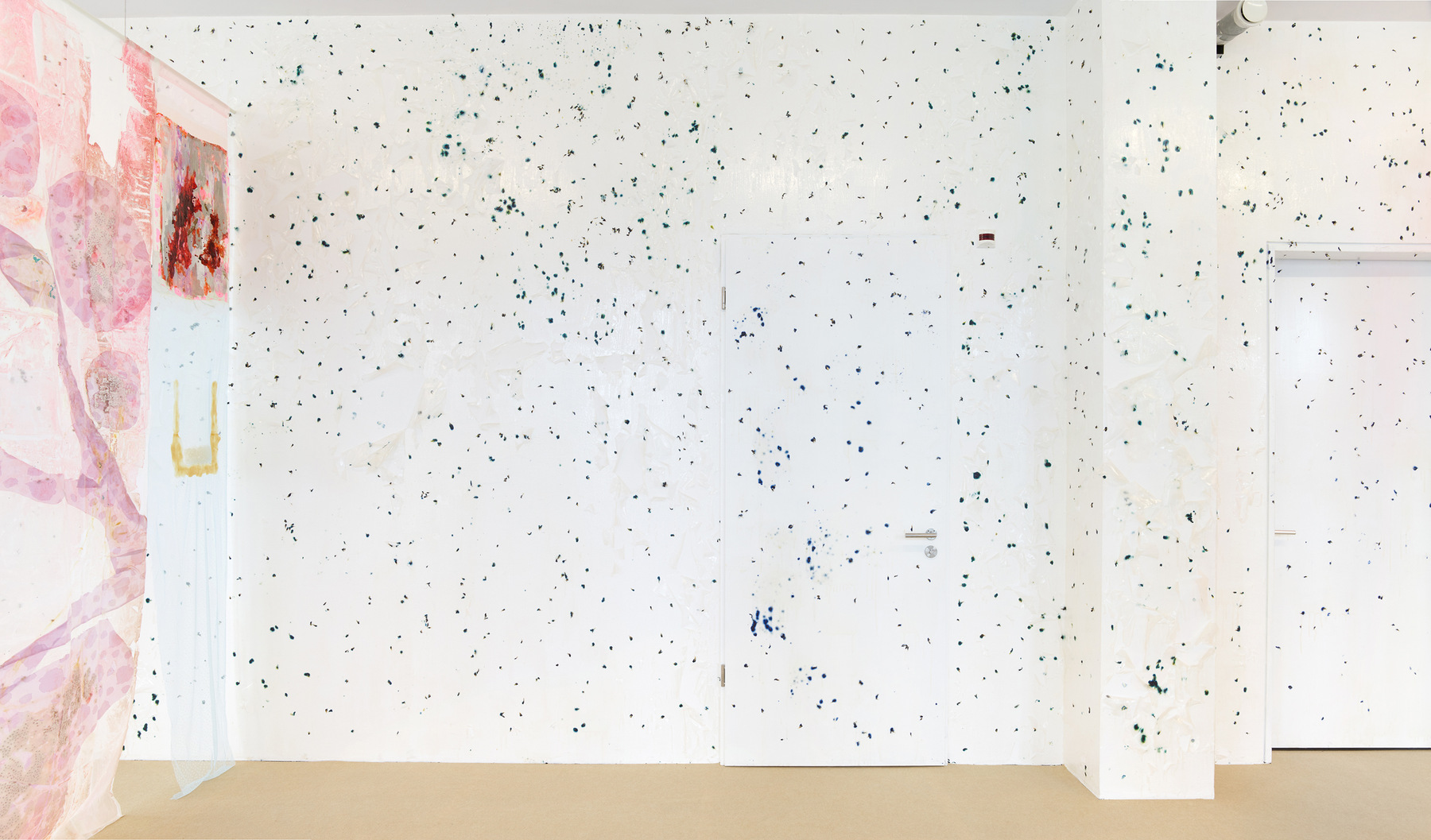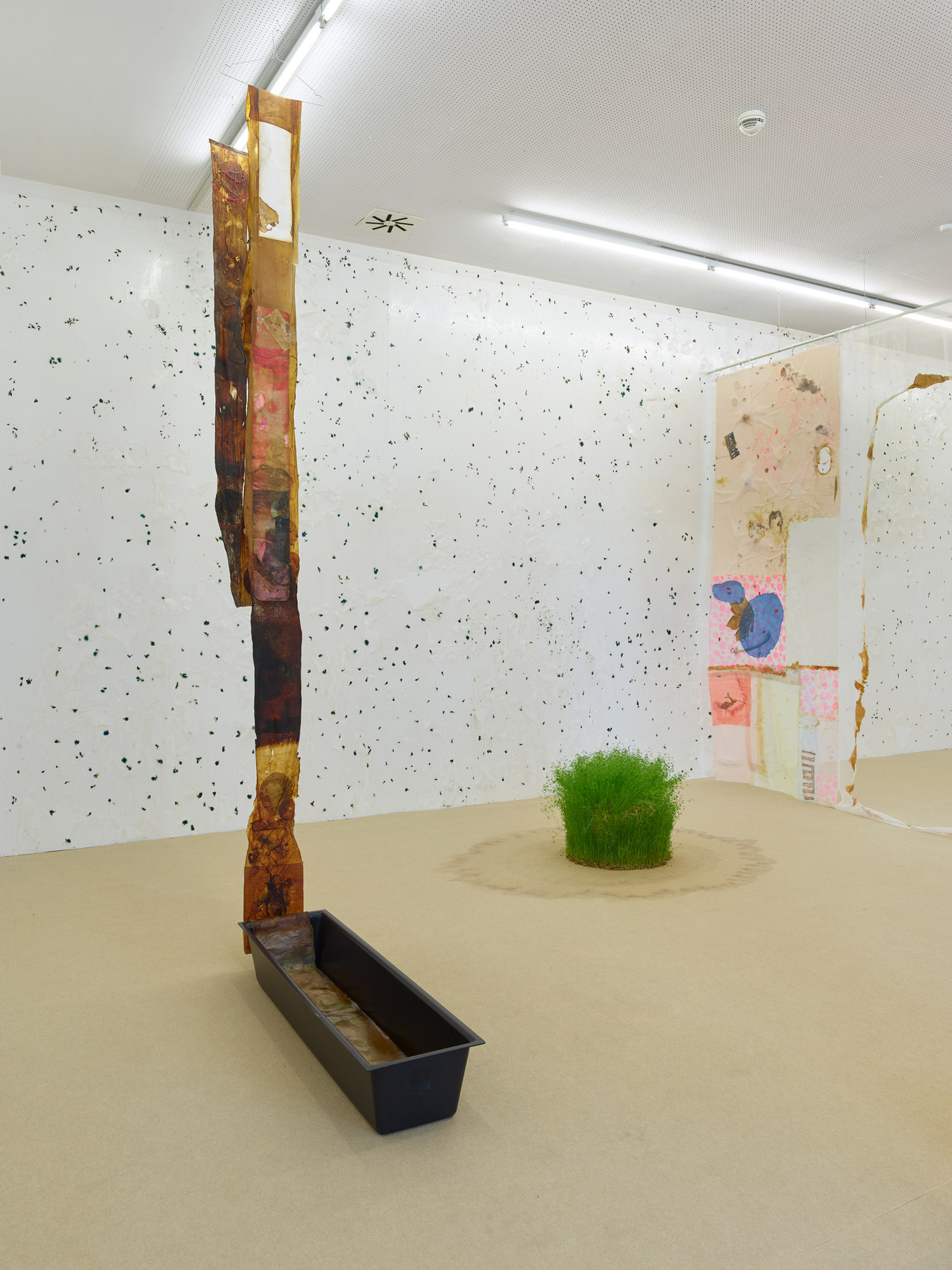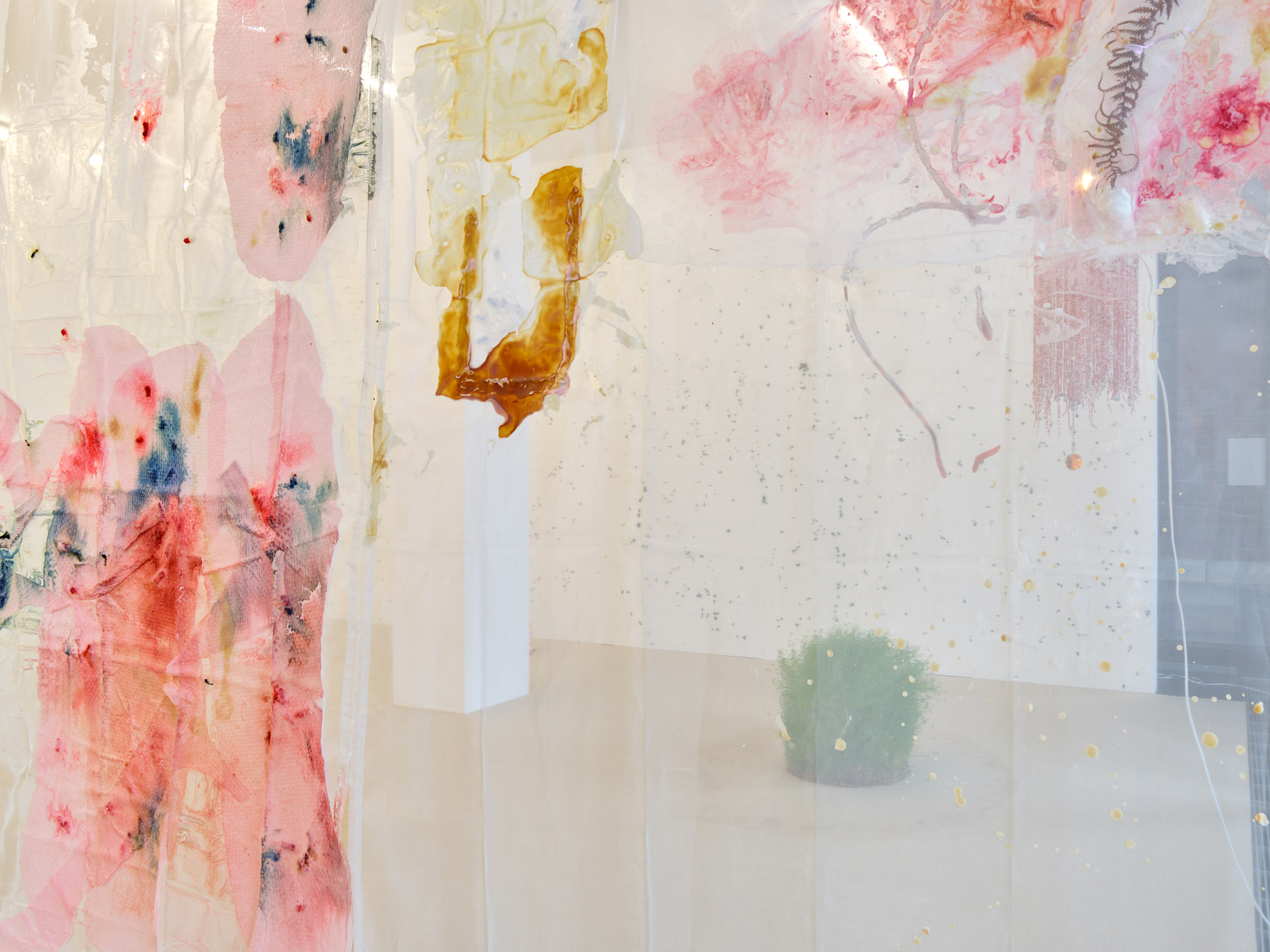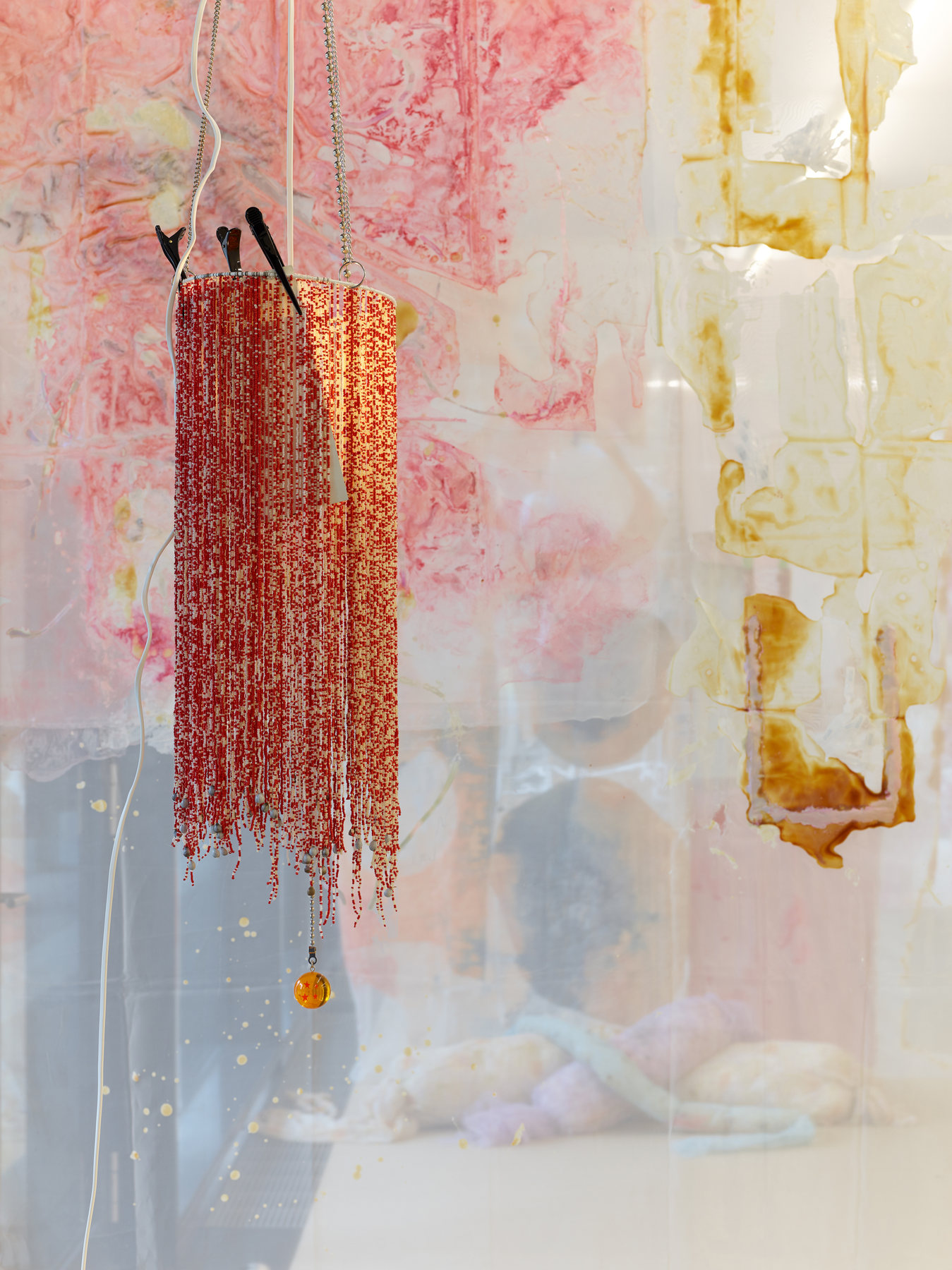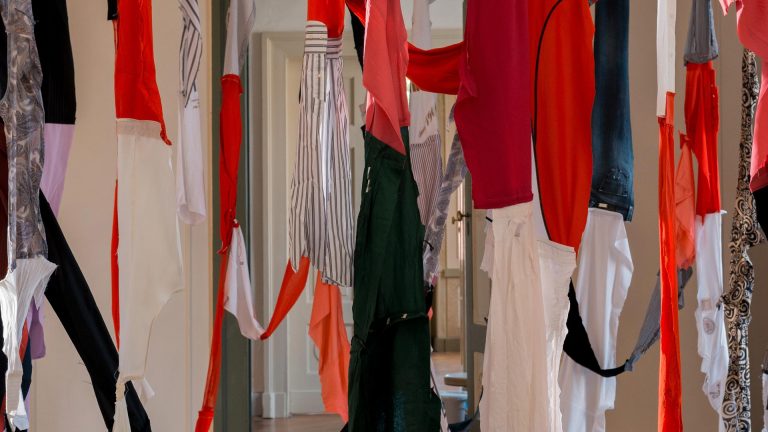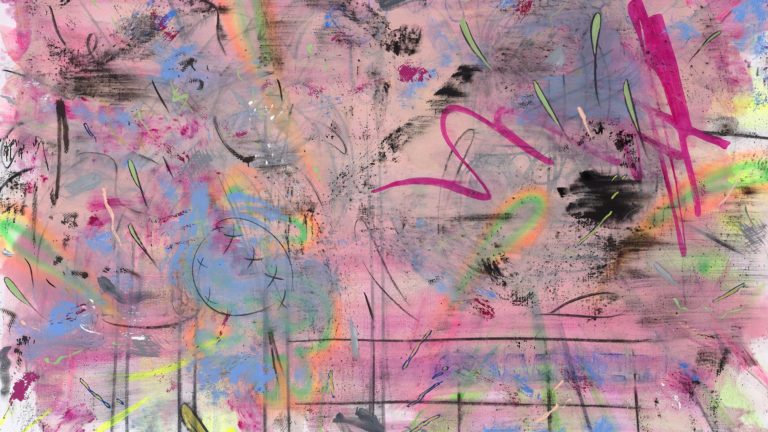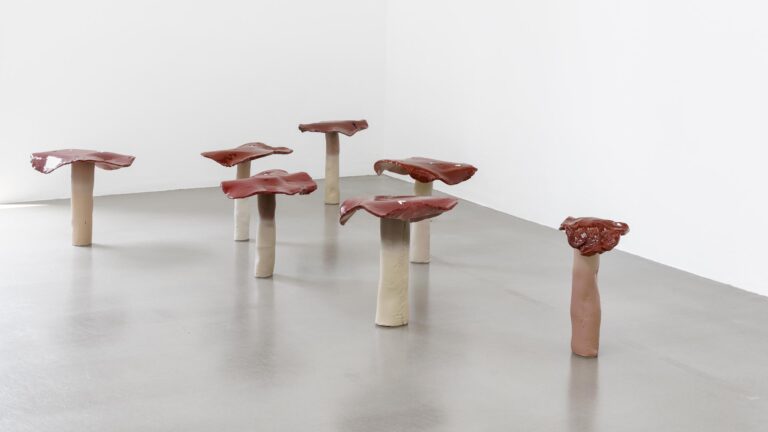Artists: Mimosa Echard, Michel Blazy
Exhibition title: LUCA – Last Universal Common Ancestor
Curated by: Oriane Durand
Venue: Dortmunder Kunstverein, Dortmund, Germany
Date: March 16 – May 26, 2019
Photography: Simon Vogel / all images copyright and courtesy of the artists and Dortmunder Kunstverein
Note: Exhibition floor plan can be found here
The exhibition “LUCA – Last Universal Common Ancestor” brings together two artists from different generations: Michel Blazy was born in Monaco in 1966, Mimosa Echard in Alès, France, in 1986. They share an interest in the organic: in Blazy’s work, this has close ties with nature and its power of growth, while in Echard’s the link is more with the human body. As a result, biological processes are central to the “living” installation developed collaboratively by the two artists that completely fills the Kunstverein.
Mur Clitoria (2019), a striking work running round the walls of the space, consists of the food additive agar-agar and a large number of flowers from the blue pea (Clitoria ternatea). Once applied to the wall, the (synthetic -looking but natural) gelling agent gradually dries out and begins to crack open like a peeling skin. The ongoing drying process, determined by the specific climate of the space, causes the work to continually change over the duration of the exhibition. Blazy’s processual, time-based approach is also reflected in the four green bushes that make up Buissons lentilles (2018-ongoing). Consisting only of lentils and moist cotton wool, the small biotopes are watered regularly and begin by growing before either rotting or drying out. The circular stains that form a halo around the works, like annual rings in a tree, are signatures of time. These stains, an important element of Blazy’s work, are made by the chemical or physical interaction of two different materials. Like a mycelium (the web of filaments in a fungal growth), they have both a living and a linking quality. In many ecosystems, mycelia play a decisive but hidden role for life, like the common ancestor of all of today’s cellular organisms billions of years ago: LUCA.
Referring to this – hypothetic – last common ancestor, Echard has created a large frieze that traces the sexuality of plants. While human sexual reproduction is based on fusing the nuclei of male and female sex cells, there are plants that unite both sexual characteristics within themselves, although there are also some that display similar differences to mammals. The painterly collages on the three curtains that divide up and define the space refer to this even in their choice of materials: in places, sprinklings of cherry and apricot pips spat out while eating the fruit and blue pea flowers spread rhizomatically across the fabric, and in Le petit artiste (2019) three cushions draped in a tangle suggest plants like ferns, chrysanthemums, gardenias and ginseng.
Like the stains in Blazy’s work, liquids play a major part in Echard’s practice: sticky latex connects several pieces o f fabric and forms lumpy, scar-like structures at the edges of the archways cut out of the curtains. Flasks of saline solution, spilled red pill capsules and a poster of Robert Pattinson (who plays a blood-sucking vampire in the Twilight movies) are other direct or indirect allusions to fluid substances. The patterns of the materials and objects, as well as the colours, thus also flow into each other in the narrative of the frieze, permeating one another in the texture of the work in which Echard alludes, among others, to plant and human sexuality. In the work untitled (2019) recalling a skyline made of perfume, nail varnish bottles and other cosmetic products a similar process of exchange takes place. Consisting of the container’s own contents and spilled w ith latex, this dried magma connects the whole arrangement of vessels in one carnal and dirty unity. Here, everything protrudes and flows into each other, symbolizing the mechanisms of seduction and rejection. Body fluids have both a sensual and an obscene side: with its strong red colour, blood, for example, can be both attractive and repulsive. The colour pink, too, has ambivalent associations: it can evoke something organic like a membrane, but also a “girlie aesthetic”, allowing it to be read as a subtl e reference to the constructedness of gender.
As part of the show LUCA, Blazy and Echard are also presenting the Kombucha Project Center, a work that has been developing like an organism since 2017, acting here as an exhibition within the exhibition: to date, Echard and Blazy have invited seven artists to contribute a work to the Kombucha Project Center. Their drawings, objects and photographs are submerged in liquid kombucha that gradually forms a gelatinous membrane that covers and connects them. Over time this results in an ever-extending ribbon-like structure that also exemplifies the themes of LUCA: an unpredictable combination of human creation and nature whose flowing, merging and expanding embody the principle of life.

